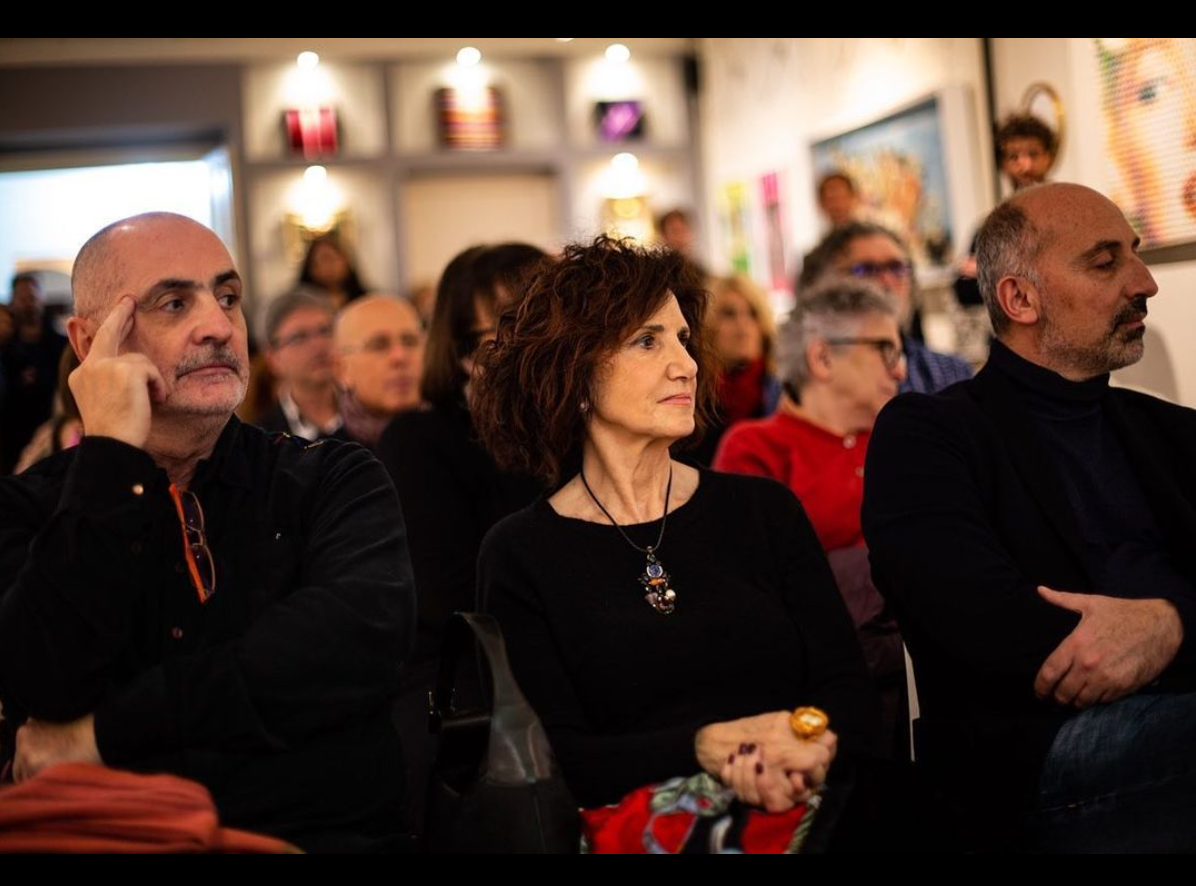The digital revolution has reached its most important level since its birth in the current period.
The pandemic crisis has been one of the phenomena that have accelerated its spread in all economic and production sectors, as well as in the service and social sectors.
Not least, the art world has had to adapt to this unexpected event by relying more and more on digital technology, a new ‘ally’.
PHYSICAL OR DIGITAL?
The lockdown has forced art galleries to suspend opening to the public, stop exhibitions and fairs interrupted.
 HACKATAO exhibition at the ZANINI ARTE gallery before Covid.
HACKATAO exhibition at the ZANINI ARTE gallery before Covid.
This situation has forced collectors and art lovers to open up to new forms of permitted enjoyment.
Thanks to the use of technology, it has been possible to continue to cultivate and nurture enthusiasm even remotely. New ways of exhibiting and communicating art have been invented: virtual visits with 3D platforms, live streams on social networks, presentations via zoom, video consultations and e-commerce purchases…
HOW HAS THE ZANINI ART GALLERY PERFORMED?
In this respect, the Zanini Arte gallery has kept up with the times and been close to its collectors without freezing in the meantime.
It has entirely redesigned its website www.zaniniarte.com to allow faster and more complete use. It presented new artists with private digital events. It created a new video format on social networks dedicated to curiosities about its artists in just 30 seconds ‘LosapevARTE’, art pills through the reel format of Instagram, Facebook and YouTube.
It has also started to propose a section dedicated to Crypto Art.
The Zanini Arte gallery is a great believer in the potential of Crypto Art and has been active from the outset in integrating this proposal as well, supporting its leading artists in this new international movement.
WHY WILL PHYSICAL ART NOT DISAPPEAR AFTER THE ADVENT OF DIGITAL ART?
The pandemic has made us realise that online and offline are not necessarily antitheses, but that they can interact to mutually support the art scene. However, we must not forget that digital cannot fully replace physical and there are many reasons for this:
- Galleries are a place of knowledge, education but also and, above all, of socialisation. In digital there can be direct but virtual contact. In the gallery there is empathy and often friendship.
- The digital work is accessible to everyone, but the physical work can give an extra emotion. When you stay in front of an art work, you can perceive its materiality, the creative gesture of the artist, catching something more with each glance than mere aesthetic appreciation.
- Visiting a museum or gallery is a real experience. We are no longer satisfied with knowledge alone, we want to be immersed, and it’s this feeling that drives us to travel miles to go to a museum to see a painting or to a square to see a sculpture, thus being able to contemplate it live and savour the memory of it afterwards.
- Last but not least, we may be in a new millennium, in a new digital age, but the pleasure of being able to decorate our homes with pieces from every era, to be touched and appreciated every day, is still something we hope to be able to indulge in without being subjugated only by robotics for quite a few more years.



